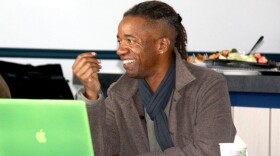SUNY Buffalo has joined the ranks of the increasing number of colleges and universities hiring sustainability directors.
Now begins the hard part for these employees, tasked with making campuses more environmentally friendly.
‘Climate neutrality’ in 19 years
The goals set by University at Buffalo (UB) chief sustainability officer Ryan McPherson are ambitious and challenging. As the first employee of his kind in the SUNY system, he admits there will be a learning curve to shaping the new position to actually achieve what’s called for in the job description.
In 2007, UB was one of the first schools in the country to sign the American College and University President’s Climate Commitment. Under that agreement, UB will try to achieve climate neutrality by 2030, meaning the school will offset its entire environmental impact, like carbon emissions.
At a place like UB, with two campuses, a combined 40,000 students and employees - many of whom commute daily with single occupancy vehicles - McPherson must orchestrate massive changes to meet the stipulations of the agreement.
He’s also joining an institution with a thick tangle of bureaucracy, at both the local level and from SUNY in Albany, as he charts the course of the embryonic sustainability officer position.
Even if the school were to do everything right, achieving the 2030 goal is wrought with uncertainty, says McPherson.
“We wouldn’t presume to think that we know what’s going to happen between now and 2030,” he says.
A role for higher education
If UB meets its goal, it will likely do so in scant company, as the majority of schools globally haven’t signed on. But McPherson says the planet’s poor environmental condition means that somebody has to try to design a way to operate large human institutions in manner that doesn’t continue the current path of unsustainable consumption and pollution.
“Higher education has been a leader in many different movements. If you look back over history you see a strong fostering of those types of things,” McPherson says.
McPherson will attempt to sell and incentivize the “greening” of the campus as a money saver - a strategy that has baited other large institutions the past few years, he says.
“I don’t think [other places undertaking sustainability plans] are doing that because it’s the right thing to do. I think some are - and that’s laudable and great. I think they’re looking at it with a bottom line. They’re realizing that there’s too much wasted money and too wasted resources and that there’s a smarter way to do things here,” he says.
McPherson isn’t starting from scratch, he’s inheriting UB’s detailed Climate Action Plan and a list of greenlit projects. For instance, UB hopes to complete a strand of solar panels that will provide electricity for its 700 or so student apartments before the year is out.




